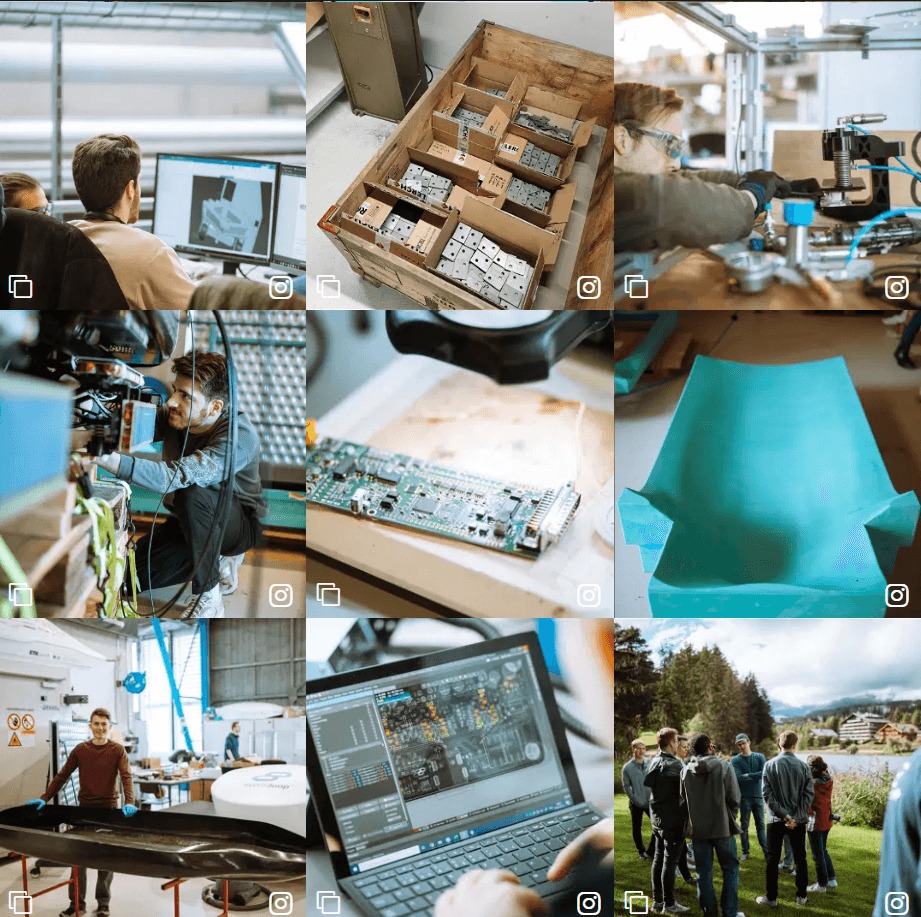At RESET, we’ve written extensively about planes, trains and automobiles. Transport, after all, is generally considered to be an important low-hanging fruit when it comes to imagining a greener future. But there’s one mode of transport that could revolutionise the way we get from A to B—and it’s in the hands of a group of Swiss students.
Hyperloop is a high-speed transportation system concept whereby users travel through tubes in a form of vacuum. The vaccum creates a reduced drag enabling travel at high speeds of up to 1,200 kph. The reduced energy required to mitigate drag means that hyperloop systems have the potential to be not only significantly faster at transporting people and goods from A to B, but also more energy efficient and quieter than traditional modes of transport.
It might sound far-fetched and futuristic, but hyperloop is not a new idea. The concept of moving people and items through pipes using air pressure has been in circulation since at least 1799. Today, hyperloop usually refers to a well-known white paper published in 2013 by Elon Musk, which proposed that transport pods would gradually accelerate using a linear electric motor and glide airborne over their trajectory through near-vacuum tubes under or above the ground.
Musk claims hyperloop pods will be faster than trains, safer than cars and much less damaging to the environment than aircraft. But, Musk claims a lot of things. Can the hyperloop system really work?
Swissloop: A hyperloop model to watch
Swissloop, a student-led organisation from ETH Zurich, is a frontrunner in hyperloop pod development.
The team, comprised of university students and multidisciplinary experts in mechanical engineering, electrical engineering and computer science, design and build cutting-edge hyperloop prototypes. These prototypes are then submitted and tested at the annual hyperloop Pod Competition, organised by Musk’s SpaceX.
Swissloop’s submissions consistently outperform other submissions, often placing in the top ranks and receiving awards for their innovative designs and technical excellence.
Their focus on lightweight materials, aerodynamic designs and advanced propulsion systems enhance their pod’s performance. Their protoypes are constantly refined via rigorous testing and continuous improvement cycles, ensuring they use the most advanced technology.
Swissloop: Key milestones at a glance
2017: Swissloop is founded by students from ETH Zurich. They achieve third place overall in the SpaceX Hyperloop Pod Competition with their pod named “Escher.”
2021: Swissloop Tunelling is one of only two teams of 12 to complete the Not-a-Boring Competition, which aims to propel the development of tunnel boring, an essential element in the development of high-speed underground transportation systems, founded by Elon Musk’s company ‘The Boring Company.
2023: In addition to second place overall, Swissloop Tunneling win first place in the innovation category in the 2023 Not a Boring Competition.
2024: Swissloop Tunelling wins Not a Boring Competition with its groundbreaking micro tunnel boring machine, the Groundhog Beta. It also wins three awards at the first European Hyperloop Week in Switzerland in July 2024, the largest event to date.
Could hyperloop systems change the world?
While it’s impossible to put a number on it for now, estimates suggest that hyperloop could be anywhere between 10 and 25 times more energy-efficient than aeroplanes. Energy consumption per passenger kilometre for hyperloop is projected to be lower than that of electric cars and even high-speed rail.
In addition, hyperloop system designs often incorporate renewable energy sources such as solar panels mounted along the tubes. This not only enhances energy efficiency but also reduces the carbon footprint of the transportation system. A 2016 study from the University of Hamburg calculated the effects of a 300km hyperloop system on road traffic. It found that even though a hyperloop in cloudy Germany could not (currently) run solely on solar power, it could still save up to 140,000 tons of carbon dioxide emissions annually.
The Swissloop team envisions hyperloop as a sustainable and efficient transportation solution for the future, addressing challenges like congestion and environmental impact.
However, how close we are to being propelled through vacuum tubes to work remains to be seen. Building hyperloop systems requires substantial investment in infrastructure, including tunnels, stations and supporting systems. The high costs and the need for new regulatory frameworks are major hurdles. Public acceptance is another challenge, requiring transparency and education to build trust in the technology. After all, people are likely to be reluctant to being shot 1,200kmp/h through a tube without appropriate reassurance.
A 2022 analysis of hyperloop systems by Frontier was critical of the hyperloop concept. The study found that;
“Musk’s ideal hyperloop is said to reach ultra-high speeds of around 1,200 km/h, though evidence in the literature suggests more likely speeds of around 500 km/h due to the practical realities of engineering in different locations coupled with limits of passenger comfort. It will have a relatively low carrying capacity per departure due to each pod having only 28 seated passengers… for the most part, the positive claims for hyperloop are disputed or at least suggested to be overstated.”
The study goes on to say that “it would be foolhardy for any government to commit to building a commercial hyperloop line or system without much more thorough testing of prototype systems”.
For all of Musk’s characteristically exaggerated claims, it’s clear that organisations such as Swissloop are taking the important step of testing, refining and retesting hyperloop prototypes.
And, competitions aside, real-world tests are underway. The longest hyperloop test track in Europe opened in the Netherlands in 2024, renewing hopes that, according to the Guardian, a pan-European network could appear “in a few decades.”
The post Hyperloop: These Swiss Students Could Be Pioneering the Future of Transport appeared first on Digital for Good | RESET.ORG.


